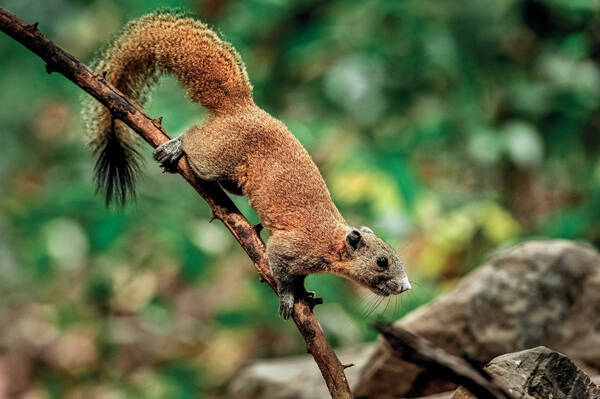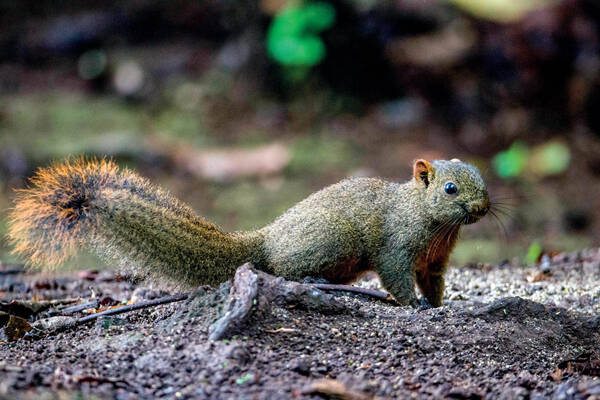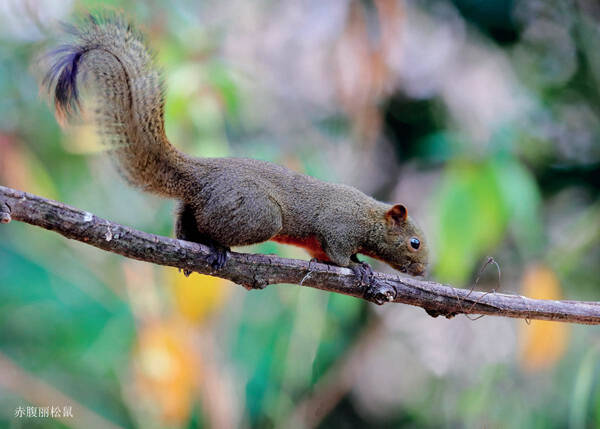Callosciurus erythraeus
IUCN
LCBasic Information
Scientific classification
- name:Callosciurus erythraeus
- Scientific Name:Callosciurus erythraeus,Red-bellied squirrel, flying squirrel, dart mouse
- Outline:Rodents
- Family:Rodentia Sciuridae Sciurus
Vital signs
- length:178-223mm
- Weight:
- lifetime:
Feature
It has a slender body, a long tail, and the color of its abdomen varies depending on the specific habitat.
Distribution and Habitat
In China, it is distributed in Yunnan, Guizhou, Guangxi, Guangdong, Hainan, Fujian, Taiwan, Zhejiang, Jiangsu, Anhui, Henan, Jiangxi, Hubei, Hunan, Sichuan, and Chongqing. Abroad, it is distributed in India, Myanmar, Thailand, Cambodia, Vietnam, and the Malay Peninsula.
It lives in tropical and subtropical rainforests, monsoon forests, evergreen broad-leaved forests, secondary forests, and near farmlands, orchards, and villages. It is a dominant species in forest areas.
Appearance
The snout is relatively short. The back, sides and outer sides of the limbs are mainly olive brown with some black hair. The color of the abdomen varies depending on the specific habitat. From south to north, the overall trend of the hair color change is from dark to light (chestnut red gradually fades to orange-yellow, to grayish white with light khaki). The area around the eye sockets is brownish yellow. The ears, cheeks, chin and snout are gray, and the back of the front and back feet are mixed with black hair. The tail hair is long and fluffy, with a similar color to the back of the body, and the hair at the end of the tail is slightly yellowish brown or white.
Details
Red-bellied squirrels, also known as red-bellied squirrels, are arboreal animals. They mostly live in trees, using the branches of branches to build a frame with small sticks, surrounded by leaves and fine grass to climb things, and look like a bird's nest from the outside. Some also use the holes of tree trunks and woodpeckers to build a rat's nest. There are also its nests on the rough rocks of cliffs and under the eaves of rural houses in mountainous areas, and some build nests on the branches of pine trees or other trees. Sometimes they can also use abandoned bird nests to transform them, or use the eaves and ceilings of houses in residential areas near mountainous areas to build nests.

Build nests in tree holes or branches of tall trees. Frequent activities in the morning and evening, good at climbing between branches, and occasionally go down to the ground. Mainly feed on plant fruits, buds, flowers and insects. Diet is more diverse, harming chestnuts, corns, peaches, plums, pears, longans, lychees, loquats, grapes, etc., and also eats grass, crops and insects, bird eggs, chicks and lizards. Eat while sitting, and use the front feet to put food into the mouth. In addition, red-bellied squirrels living near houses often enter kitchens to steal food.
They especially like to live in the forests of beech plants, and also move around in the bushes on the cliffs. They are active all day long, usually more frequently in the morning or before dusk, and have a certain route when they are active. They like to live in groups, mostly in trees, are good at climbing, can walk on cliffs, are good at jumping, and often jump from one tree to another when looking for food, up to 5-6 meters, so they are called "flying squirrels" or "dart rats".

The breeding period of red-bellied squirrels is relatively long, and they can reproduce all year round, but the peak season is in December and May. Generally, there are pregnant individuals every month from February to September. Each litter usually has 2 pups, but there are also 1 or 3 pups. Generally, they shed and molt in March and April, and start to replace their winter fur in August.
This species has been included in the "National List of Terrestrial Wildlife with Important Economic and Scientific Research Value".









